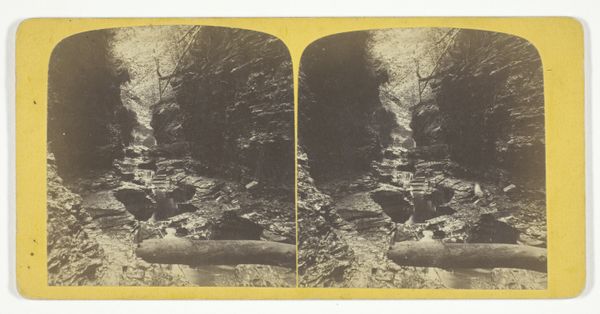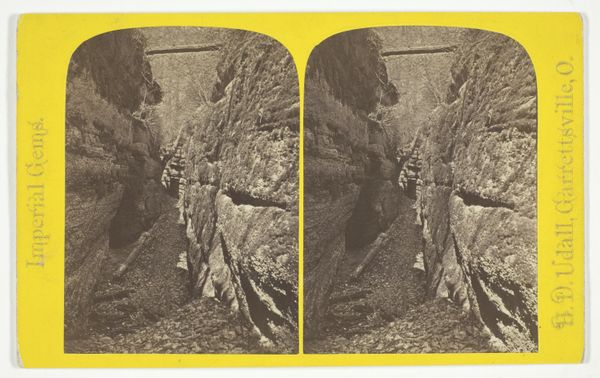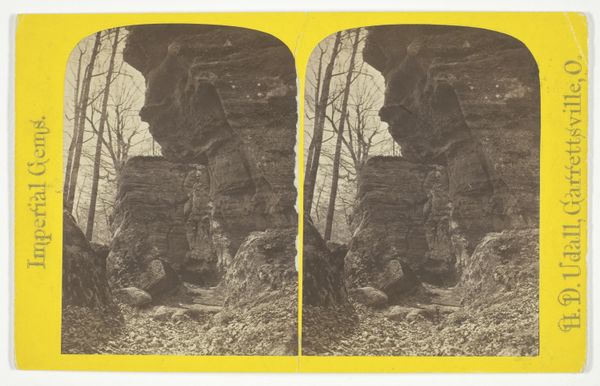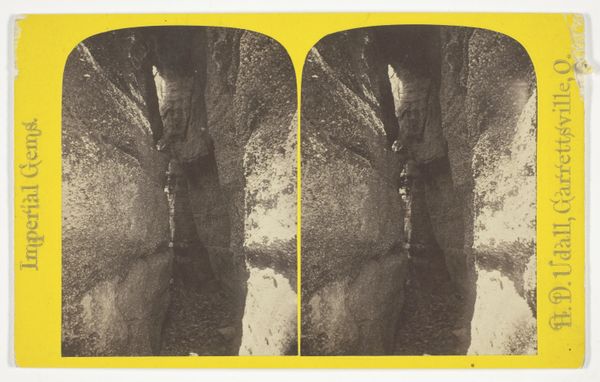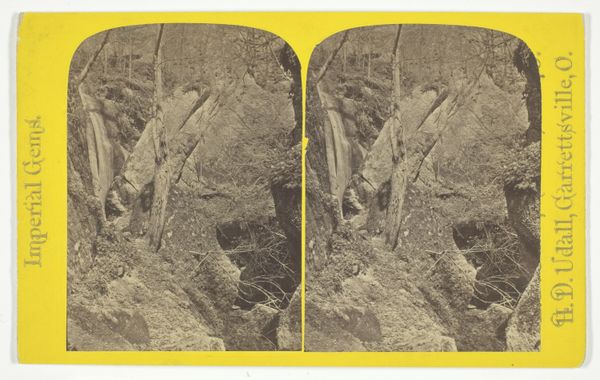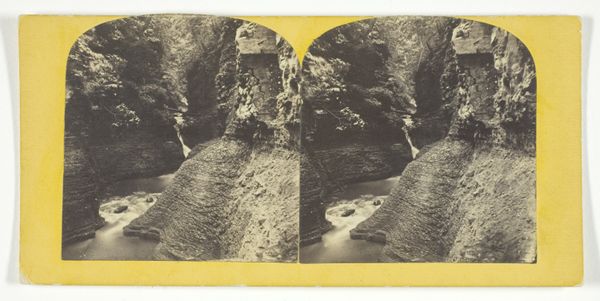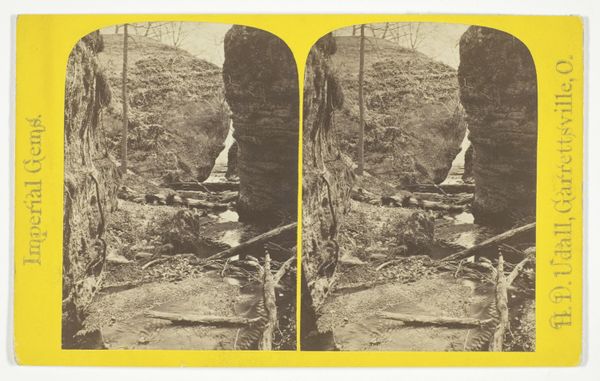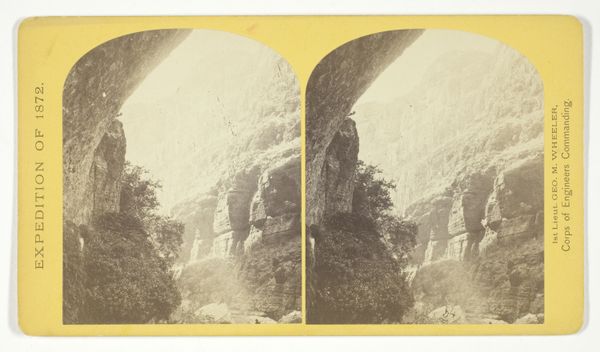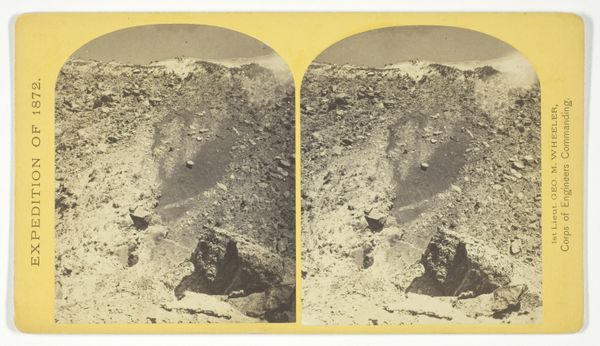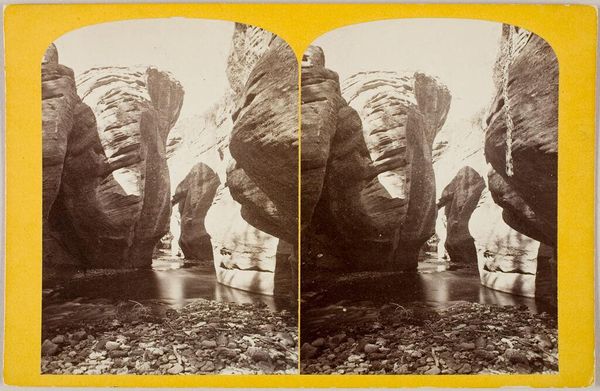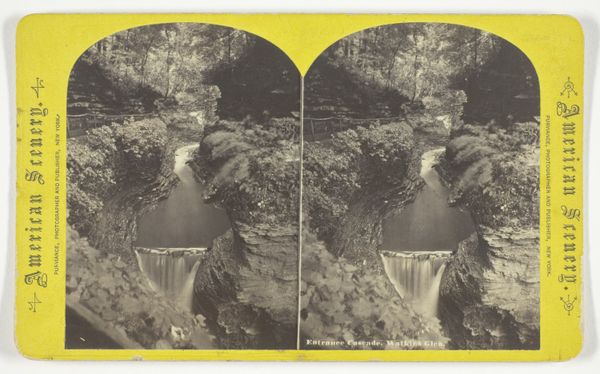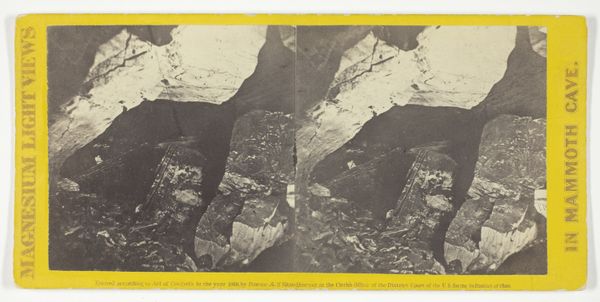
The northern wall of the Grand Cañon of the Colorado, near the foot of To-ro-weap valley. The rounded rocks of the foreground are sand-stone 1872
0:00
0:00
stereo, photography, gelatin-silver-print
#
16_19th-century
#
stereo
#
landscape
#
photography
#
gelatin-silver-print
#
hudson-river-school
Dimensions: 9.1 × 7.5 cm (each image); 10 × 17.7 cm (card)
Copyright: Public Domain
Editor: This is a gelatin-silver print called "The northern wall of the Grand Cañon of the Colorado, near the foot of To-ro-weap valley. The rounded rocks of the foreground are sand-stone", created in 1872 by William Bell. I am immediately struck by how tiny the human figure is, dwarfed by the scale of the canyon. What do you see in this piece? Curator: This photograph, seemingly simple, carries within it the weight of the American West’s visual conquest. The figure, perched on the precipice, isn’t just an explorer; he is an emblem of manifest destiny, echoing the Hudson River School's sublime landscapes but now documented through the 'objective' lens of photography. Editor: So, the lone figure isn't just documenting the land but also represents a kind of claim over it? Curator: Precisely! Consider the power of photography at that time. It wasn’t just a recording device, it was a tool for shaping perception. This image, disseminated as part of a stereo card, brought the 'untamed' West into Victorian parlors. Notice the contrast between the solid, tactile rocks in the foreground and the hazy, seemingly infinite expanse of the canyon behind them. Editor: Yes, the sharp focus on the rocks definitely grounds the viewer, while the canyon almost feels like a dreamscape. How do you think this image was received by audiences back then? Curator: I believe the audiences may have felt awe, of course, but perhaps also a sense of reassurance, that this vast wilderness was now being measured, cataloged, and thus, brought under control. Don't you find it somewhat unsettling how seamlessly the artistic vision blends with the agenda of exploration and territorial acquisition? Editor: It is unsettling, now that you mention it. The photo masquerades as a mere document, but it's a constructed view that reinforces certain narratives about progress and civilization. Curator: Indeed, these seemingly objective records are often laden with cultural and psychological baggage. Considering it now, from our perspective, we can be more critical, which helps unlock more meaning. Editor: This has totally shifted my perception! I'll never look at landscape photography the same way again. Curator: And I will definitely be keeping an eye on what “seemingly objective” photographs mean.
Comments
No comments
Be the first to comment and join the conversation on the ultimate creative platform.

